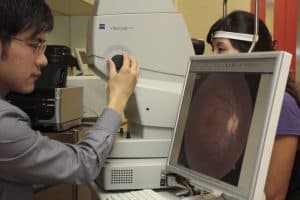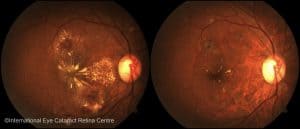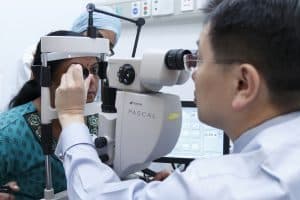
Dr Au Eong Kah Guan
MBBS(Singapore), MMed(Ophthalmology)(Singapore), FRCS(Edinburgh), FRCS(Glasgow), DRCOphth(London), MRCOphth(London), FAMS(Ophthalmology)(Singapore)
By Dr Au Eong Kah Guan, Medical Director and Senior Consultant Ophthalmologist, International Eye Cataract Retina Centre at Mount Elizabeth Medical Centre and Farrer Park Medical Centre, Singapore
Each month, the American Academy of Ophthalmology recognises one or more observances dedicated to raising awareness about eye health topics. November is Diabetic Eye Disease Awareness Month.
Diabetes mellitus, or diabetes in short, is the leading cause of blindness in working-age adults. The Diabetic Eye Disease Awareness Month aims to increase awareness of this potentially preventable cause of blindness and to encourage diabetic patients to screen and seek treatment for vision problems related to diabetes.
Diabetes affects about 1 in 12 Singapore residents aged 18-69 years. The prevalence of diabetes increases with age. Among elderly Singapore residents, diabetes affects 32.4% of those aged 60-69 years.
Diabetic eye disease is a group of eye problems that affects individuals with diabetes. It includes diabetic retinopathy, cataract and glaucoma. The most common of these is diabetic retinopathy.
Early diabetic eye disease may not produce visual symptoms and is often unnoticed. In fact, vision may not be affected until the disease is relatively severe and more difficult to treat.

Diabetic retinopathy is a potentially blinding condition in which blood vessels in the retina, the light-sensitive layer lining the inside of the eye, become damaged from the high blood sugar levels associated with diabetes. This leads to leakage of fluid into the retina and obstruction of blood flow within the blood vessels. Both of these effects may cause severe vision loss.
Among Singapore Malays with diabetes, the prevalence of diabetic retinopathy is about 35%.
Thankfully, the management of diabetic retinopathy has advanced significantly in recent years. There is now firm evidence from two prospective, multicentre, randomised controlled trials that fenofibrate (Lipanthyl) is beneficial in slowing the progression of diabetic retinopathy in patients with type 2 diabetes and pre-existing diabetic retinopathy. Fenofibrate use also reduces the need for laser therapy and vitrectomy, a major surgery for late stages of diabetic retinopathy.
Other new treatment options such as serial ranibizumab (Lucentis) and aflibercept (Eylea) eye injections have greatly improved the treatment outcomes of diabetic retinopathy.

Laser therapy may be necessary in some cases to save vision. Late stages of diabetic retinopathy often require vitrectomy. Advances in vitrectomy instruments have provided many potential benefits to patients including decreased conjunctival scarring, decreased incidence of dry eye post-surgery, decreased postoperative inflammation leading to less pain and more patient comfort, decreased astigmatic changes and quicker visual recovery. However, in some unfortunate cases, vision may still be lost despite repeated surgeries.

If you have diabetes, schedule a comprehensive dilated eye examination with your eye care professional at least once a year. Make an appointment promptly if you experience blurred vision, floaters or any other visual symptom.
Diabetes can also affect your vision by causing cataract and glaucoma. If you have diabetes, you may get cataract at a younger age and your chances of developing glaucoma are doubled.
Early diagnosis of diabetes and, most importantly, maintaining strict control of blood sugar and hypertension through diet, exercise and medication, can help reduce your risk of developing eye disease associated with diabetes.
